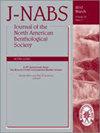Insular lake island biogeography: using lake metrics to predict diversity in littoral zone mollusk communities
引用次数: 11
Abstract
Abstract. Island biogeography theory can be used to explain patterns of species richness on various types of habitat islands, including freshwater lake systems. Mollusk production in these systems also has been linked to various water-chemistry variables, such as pH, alkalinity, hardness, and specific conductance. We examined how mollusk diversity patterns were related to geographical and limnological factors in insular lakes of the Beaver and Manitou Archipelagos in Lake Michigan (Laurentian Great Lakes), USA. The strongest correlations observed were with shoreline development (r = 0.80), specific conductance (r = 0.87), and pH (r = 0.87). Principal components analysis revealed that isolation by distance and PO43− concentration also may have affected species richness and abundance. Shoreline length was a better predictor of species richness than surface area, but both measures of habitat size were unable to account for much of the variation in species richness. The data suggest that shoreline length and development represent available habitat area more accurately than lake area for primarily littoral-dwelling mollusks. The relatively weak correlations observed with lake area and isolation from Lake Michigan suggest that application of island biogeography theory to predict mollusk species richness using only lake surface area and isolation by distance is limited for freshwater mollusks.岛屿湖岛生物地理学:用湖泊指标预测海岸带软体动物群落的多样性
摘要岛屿生物地理学理论可以用来解释包括淡水湖系统在内的各种生境岛屿物种丰富度的格局。这些系统中的软体动物产量也与各种水化学变量有关,如pH值、碱度、硬度和比电导。我们研究了美国密歇根湖(Laurentian Great lakes)海狸群岛和马尼托群岛岛屿湖泊中软体动物多样性格局与地理和湖泊因素的关系。相关性最强的是岸线发育(r = 0.80)、比电导(r = 0.87)和pH (r = 0.87)。主成分分析表明,距离隔离和PO43−浓度对物种丰富度和丰度也有影响。海岸线长度比地表面积更能预测物种丰富度,但这两种栖息地大小的测量都不能解释物种丰富度的大部分变化。这些数据表明,对于主要生活在沿海的软体动物来说,海岸线长度和发育情况比湖泊面积更准确地代表了可用的栖息地面积。与密歇根湖的湖泊面积和隔离度的相关性相对较弱,这表明仅利用湖泊面积和距离隔离来预测淡水软体动物物种丰富度的岛屿生物地理学理论是有限的。
本文章由计算机程序翻译,如有差异,请以英文原文为准。
求助全文
约1分钟内获得全文
求助全文

 求助内容:
求助内容: 应助结果提醒方式:
应助结果提醒方式:


